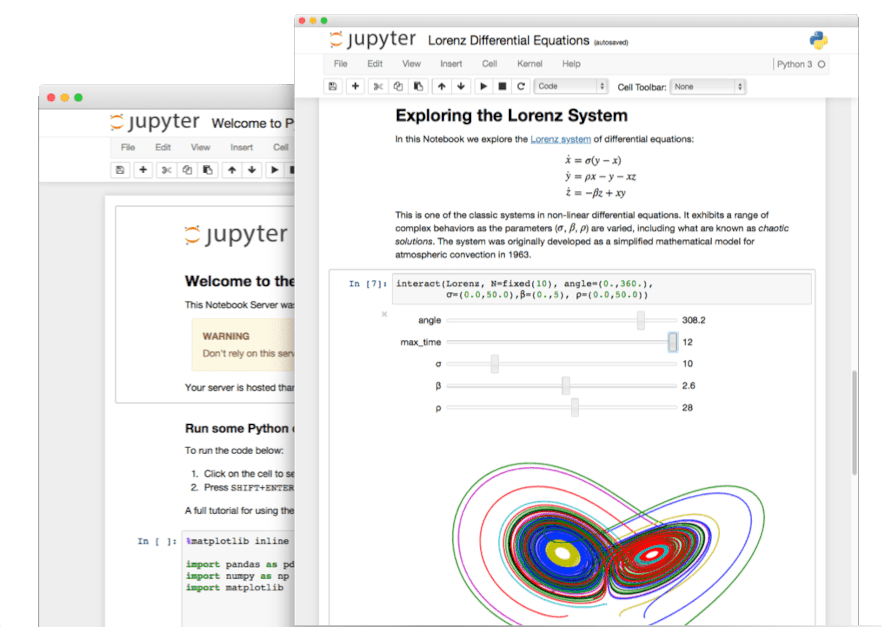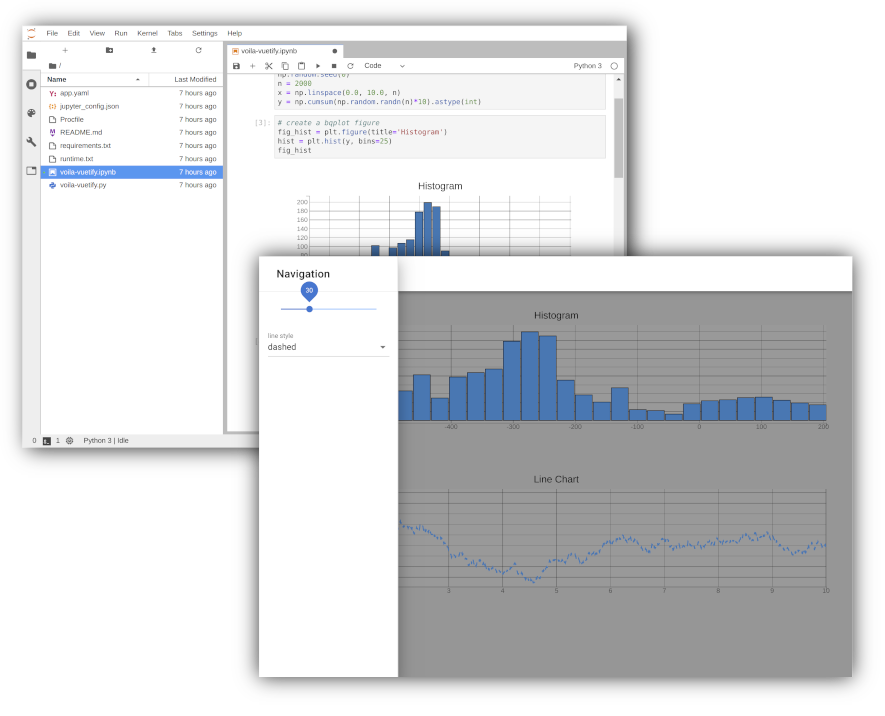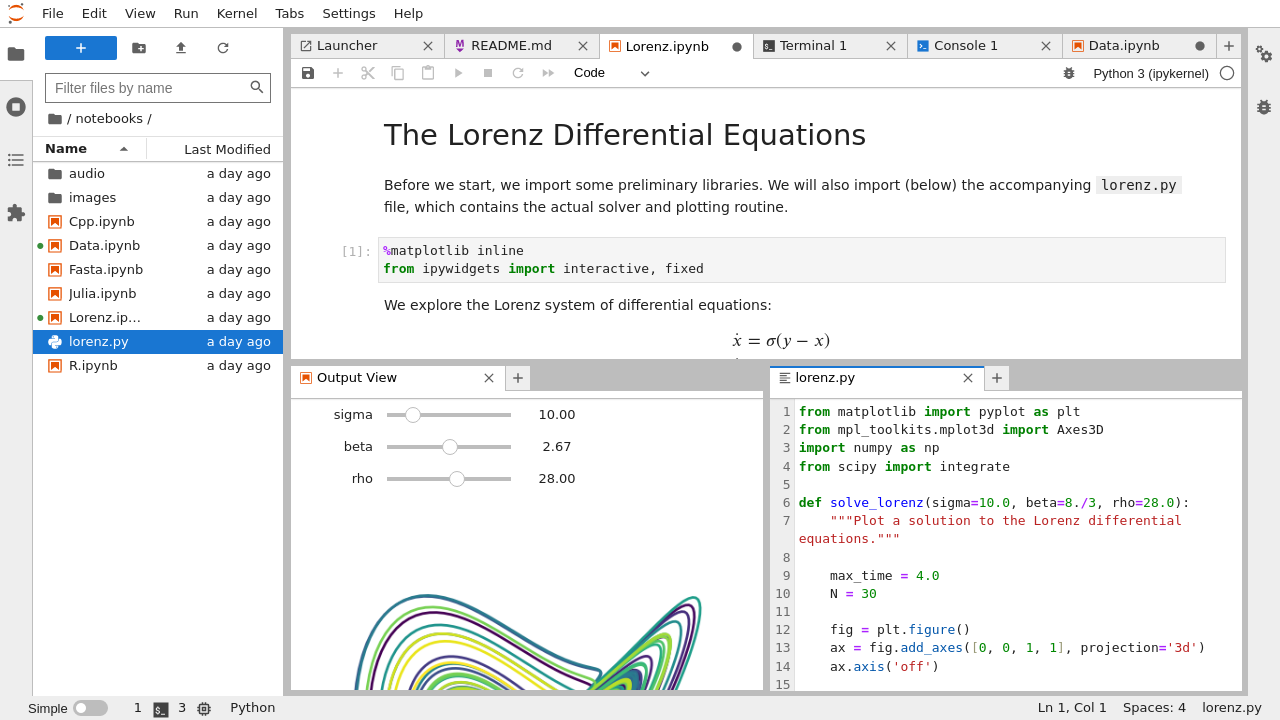About Us
Project Jupyter is a non-profit, open-source project, born out of the IPython Project in 2014 as it evolved to support interactive data science and scientific computing across all programming languages. Jupyter will always be 100% open-source software, free for all to use and released under the liberal terms of the modified BSD license.
Jupyter is developed in the open on GitHub, through the consensus of the Jupyter community. For more information on our governance, please see our governance documentation.
All online and in-person interactions and communications directly related to the project are covered by the Jupyter Code of Conduct. This Code of Conduct sets expectations to enable a diverse community of users and contributors to participate in the project with respect and safety.
Executive Council Members
The Executive Council (EC) is ultimately responsible for all dimensions of the Project (including, but not limited to, software, legal, financial, community, operations, inclusion and diversity, etc.). The members of the EC actively work to carry out the Project’s mission in accordance with its values and to support operations through delegation to the Software Steering Council (SSC), Software Subprojects, Standing Committees, and Working Groups. These other bodies will report to the EC, and the EC is expected to support, oversee, manage, and ensure the success of operations across Jupyter.
Программа юпитер что это такое
Free software, open standards, and web services for interactive computing across all programming languages

JupyterLab: A Next-Generation Notebook Interface
JupyterLab is the latest web-based interactive development environment for notebooks, code, and data. Its flexible interface allows users to configure and arrange workflows in data science, scientific computing, computational journalism, and machine learning. A modular design invites extensions to expand and enrich functionality.

Jupyter Notebook: The Classic Notebook Interface
The Jupyter Notebook is the original web application for creating and sharing computational documents. It offers a simple, streamlined, document-centric experience.
Language of choice
Jupyter supports over 40 programming languages, including Python, R, Julia, and Scala.
Share notebooks
Notebooks can be shared with others using email, Dropbox, GitHub and the Jupyter Notebook Viewer.
Interactive output
Your code can produce rich, interactive output: HTML, images, videos, LaTeX, and custom MIME types.
Big data integration
Leverage big data tools, such as Apache Spark, from Python, R, and Scala. Explore that same data with pandas, scikit-learn, ggplot2, and TensorFlow.
A multi-user version of the notebook designed for companies, classrooms and research labs
Pluggable authentication
Manage users and authentication with PAM, OAuth or integrate with your own directory service system.
Centralized deployment
Deploy the Jupyter Notebook to thousands of users in your organization on centralized infrastructure on- or off-site.
Container friendly
Use Docker and Kubernetes to scale your deployment, isolate user processes, and simplify software installation.
Code meets data
Deploy the Notebook next to your data to provide unified software management and data access within your organization.

Voilà: Share your results
Voilà helps communicate insights by transforming notebooks into secure, stand-alone web applications that you can customize and share.
Currently in use at
Open Standards for Interactive Computing
Project Jupyter promotes open standards that third-party developers can leverage to build customized applications. Think HTML and CSS for interactive computing on the web.
Notebook Document Format
Jupyter Notebooks are an open document format based on JSON. They contain a complete record of the user’s sessions and include code, narrative text, equations, and rich output.
Interactive Computing Protocol
The Notebook communicates with computational Kernels using the Interactive Computing Protocol, an open network protocol based on JSON data over ZMQ, and WebSockets.
The Kernel
Kernels are processes that run interactive code in a particular programming language and return output to the user. Kernels also respond to tab completion and introspection requests.
Project Jupyter Documentation#
Welcome to the Project Jupyter documentation site. Jupyter is a large umbrella project that covers many different software offerings and tools, including the popular Jupyter Notebook and JupyterLab web-based notebook authoring and editing applications. The Jupyter project and its subprojects all center around providing tools (and standards) for interactive computing with computational notebooks .
What is a Notebook?#

Pictured: A computational notebook document, shown inside JupyterLab
A notebook is a shareable document that combines computer code, plain language descriptions, data, rich visualizations like 3D models, charts, graphs and figures, and interactive controls. A notebook, along with an editor (like JupyterLab), provides a fast interactive environment for prototyping and explaining code, exploring and visualizing data, and sharing ideas with others.
Where do I start?#
Most people begin with Jupyter by installing an editing application that fits their preferences, like JupyterLab or Jupyter Notebook, and making their first notebook document:
- Jupyter Notebook offers a simplified, lightweight notebook authoring experience
- JupyterLab offers a feature-rich, tabbed multi-notebook editing environment with additional tools like a customizable interface layout and system console
- And more… read about additional notebook interfaces here !
You can also develop your own extensions or applications on top of existing Jupyter software. Check out the subproject sites below for more information.
More information#
These are a few high-level topics to help you learn more about the Jupyter community and ecosystem.
Try the notebook
Sustainability and growth
What is Jupyter?
How to contribute to the projects
Narratives of common deployment scenarios
New features, upgrades, deprecation notes, and bug fixes
An interactive Python kernel and REPL
Documentation for users
Documentation for advanced use-cases
Sub-project documentation#
Individual sub-projects are typically organized around a key feature of the Jupyter ecosystem, and have their own community, documentation and governance. Below is a list of documentation for major parts of the Jupyter ecosystem.
При подготовке материала использовались источники:
https://jupyter.org/about
https://jupyter.org/
https://docs.jupyter.org/ru/latest/index.html